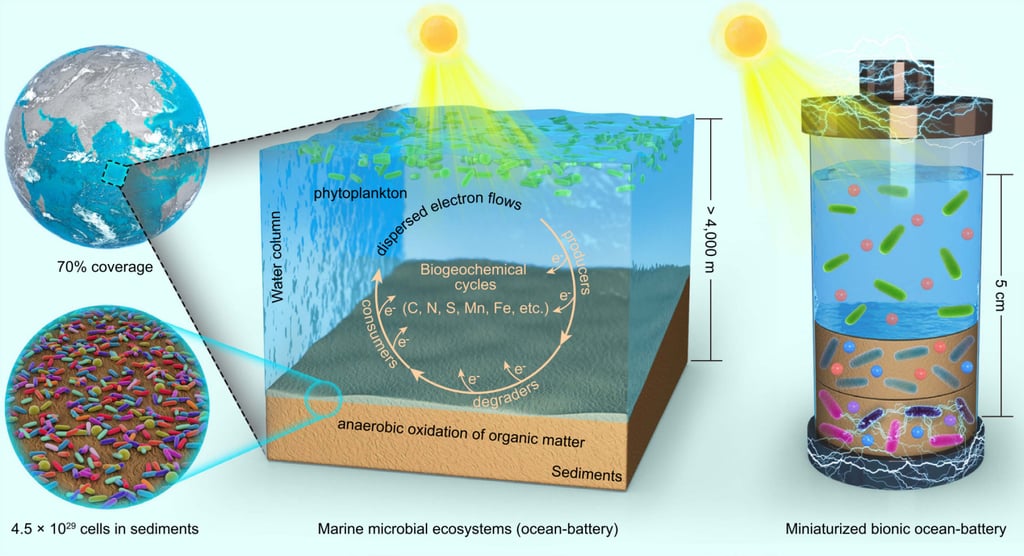How Chinese scientists used algae in seawater battery to make clean power from the sun
- Team puts four types of microorganism into miniaturised bionic ocean battery that proved stable and suitable for very low power applications
- Author says efficiency is limited by cyanobacteria activity but it could be boosted with genetic engineering

A new technology could use the ocean as a green, living battery, according to the Chinese scientists behind the innovation.
The researchers put four types of microorganism, including algae, into a battery-like device filled with seawater. The microorganisms converted sunlight to sugar and then used the sugar to produce clean electricity.

The battery put out a maximum 380 microwatts in power and operated stably for more than a month, making it suitable for ultralow-power facilities, according to the researchers.
The research group in eastern China reported their development of the world’s first biophotovoltaics device using a vast army of microbes in 2019. The power density of the new system has increased by an order of magnitude.
For now, the battery performance cannot match that of semiconductor-based photovoltaics but it reveals a more environmentally compatible and potentially more cost-effective way of generating electricity directly from light, according to the researchers.
